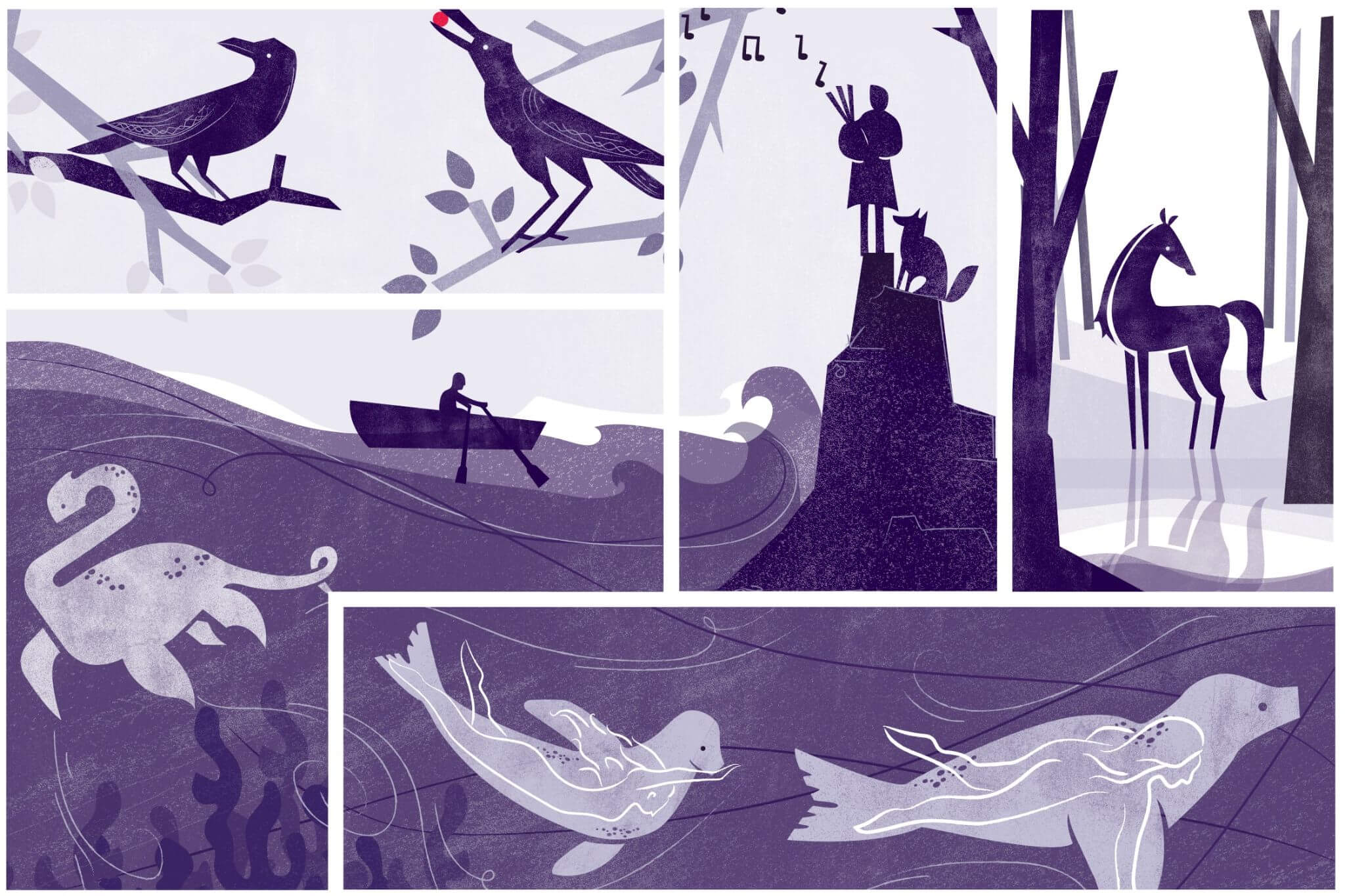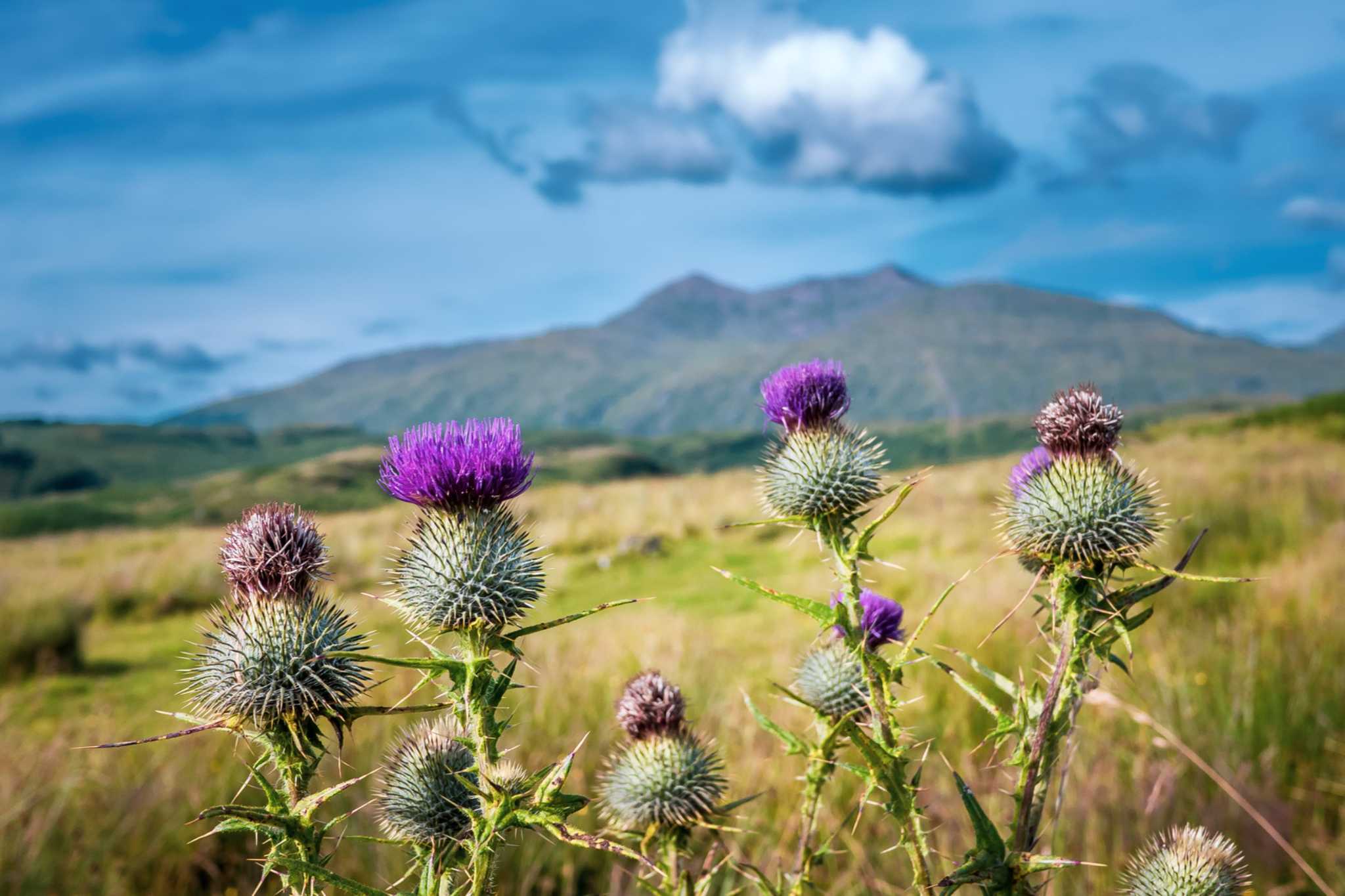The mercat cross in Aberdeen city centre
The unicorn in the history of Scotland
Unicorns have been linked to Scotland for centuries. In Celtic mythology the unicorn was a symbol of purity and innocence, as well as masculinity and power. Tales of dominance and chivalry associated with the unicorn may be why it was chosen as Scotland’s national animal.While the animal is mythological, the ideals it represents are what make it a perfect fit as the national animal for Scotland, and because like this proud beast – Scots would fight to remain unconquered.
The unicorn was first used on the Scottish royal coat of arms by William I in the 12th century. In the 15th century, when King James III was in power, gold coins even appeared with the unicorn on them. When Scotland and England unified under the reign of James VI of Scotland in 1603, the Scottish Royal Arms had two unicorns supporting a shield. When James VI became James I of England and Ireland, he replaced the unicorn on the left of the shield with the national animal of England, the lion, to show that the countries were indeed united.
Why is the unicorn chained on the Scottish coat of arms?
The unicorn representing Scotland in the coat of arms is always depicted bounded by a golden chain, which is often seen passing around its neck and wrapping all around its body. The unicorn was believed to be the strongest of all animals – wild and untamed, and that it could only be humbled by a virgin maiden. It is possible that the entrapment symbolises the power of the Scottish kings – they were strong enough to tame even a unicorn.
Fun fact
Did you know that Scotland has a National Unicorn Day? It's on the 9 April every year!
The unicorns at Delgatie Castle
Where can I see unicorns in Scotland?
Okay, so it might be a bit tricky to spot real unicorns in the wild. But if you look closely you can see the influence of the unicorn all around Scotland. The unicorns’ distinctive appearance left a lasting legacy on the country’s cities and towns, many of which, to this day, still bear unicorn heraldry.
Here are just a few places we recommend for unicorn-spotting:
- A gatepost at the Palace of Holyroodhouse, the official residence of Her Majesty The Queen in Scotland and at the gatehouse of the Queen’s Gallery by the palace.
- In front of the National War Museum and St Margaret’s Chapel at Edinburgh Castle, a historic fortress which dominates the skyline of Edinburgh.
- The Kings Fountain at Linlithgow Palace, once a magnificent Renaissance palace and the birthplace of Mary Queen of Scots.
- Stone carving on the St Andrews University building, Scotland’s first university founded in the 15th century.
The Thistle Chapel in St Giles' Cathedral
- The figurehead of HM Frigate Unicorn in Dundee, the country’s only water-based unicorn. It’s Scotland’s only surviving example of a wooden warship and one of the six oldest ships in the world.
- Atop of the Great Hall at Stirling Castle, once a favoured residence of the Stewart kings and queens and one of Scotland’s most historically important sites. At the castle, you’ll also find the beautiful Mystic Hunt of the Unicorn tapestry.
- Atop the Mercat Cross in Dunfermline, Jedburgh, Melrose, Culross, Falkland, Crail or Cupar not to mention all of Scotland’s cities (on the Royal Mile in Edinburgh and Falcon Square in Inverness).
- Unicorns at Delgatie Castle near Turriff in Aberdeenshire, one of the oldest and most historic castles in Scotland.
- The Queens chair in the Thistle Chapel at St Giles' Cathedral in Edinburgh.

